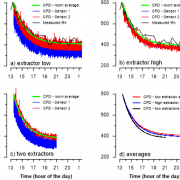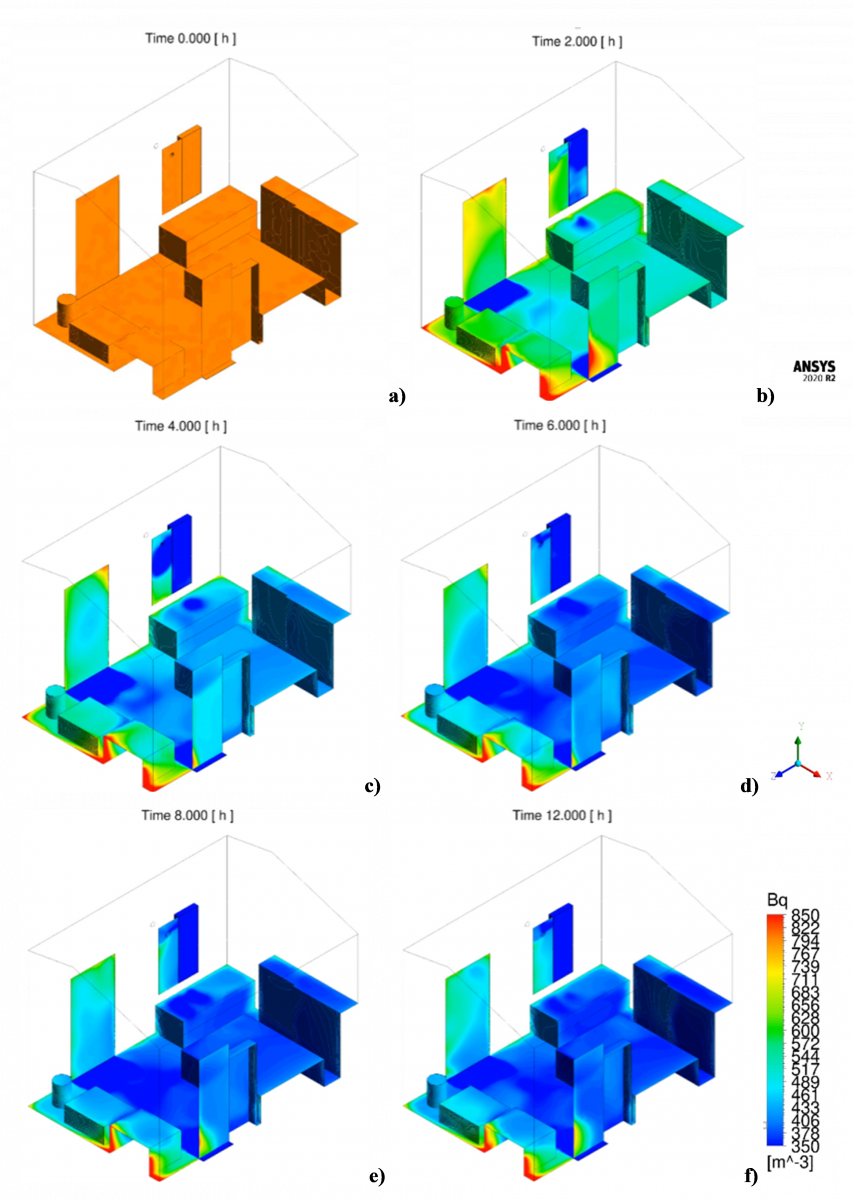Computational Fluid Dynamic (CFD) Modelling (Action B2)
Elica performed a numerical simulation of remediation system using the software ANSYS CFX. The simulation used the data from the experimental room of the Bassano Guest house and Pomezia school.
Three different ventilation configurations were modelled:
- One heat recovery unit mounted in the lower part of the window
- One heat recovery unit mounted in the upper part of the window, as shown in Figure 33a
- Two heat recovery units mounted in the window, in the same upper and lower positions
Monitoring the CFD-calculated radon values over time at the two sensor locations, as well as the overall room average, yields trend that can be compared directly with the values measured during the February 16, 2021 experiment.

In general, both single fan setups yielded room-average trends that are very similar to the experimental data, whereas the low fan position yielded a greater difference between the two sensors and more noise compared to the upper fan position.
A comparison of the room-average trends for all three configurations shows relatively similar results, with the two-fan set-up providing only a marginal improvement of the final radon activity level compared to the single fan set-ups.

The 3D representations of radon activity over time for the second and third configurations show how the greatest impact is during early times, air entry at the gaps are critical for adding fresh air, and that poor mixing in the vicinity of furniture allows for radon accumulation that requires more time to remove (via diffusion towards more well mixed and diluted areas).






